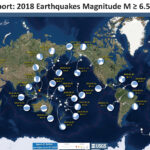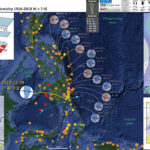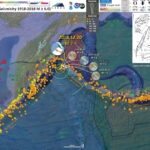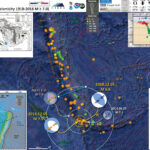Here I summarize Earth’s significant seismicity for 2018. I limit this summary to earthquakes with magnitude greater than or equal to M 6.5. I am sure that there is a possibility that your favorite earthquake is not included in this…
Earthquake Report: Philippines
Earlier there was an earthquake in the Philippines. This magnitude M = 7.0 earthquake is related to the subduction zone that forms the Philippine trench (where the Philippine Sea plate subducts beneath the Sunda plate). Here is the USGS website…
Earthquake Report: Bering Kresla Update #1
Well, the USGS updated their earthquake mechanism (moment tensor) to be more steeply dipping, showing a more vertical fault possibly. This makes more sense given the historic earthquakes in this region and our knowledge of the history of this complicated…
Earthquake Report: Bering Kresla / Pacific plate
We just had a large earthquake in the region of the Bering Kresla fracture zone, a strike-slip fault system that coincides with the westernmost portion of the Aleutian trench (which is a subduction zone further to the east). At first,…
Earthquake Report: New Caledonia / Loyalty Islands
We are still all learning so much about the earthquake in Alaska and as I was winding down for the night (the last class tomorrow before the final), I noticed an email from the Pacific Tsunami Warning Center. There was…
Earthquake Report: Alaska
What a day. I started by waking up about 5:43 AM (about, heheh), which was 17 minutes before my alarm was set. I had a job interview at 8:30. I went to the interview for a position working on tsunami…






